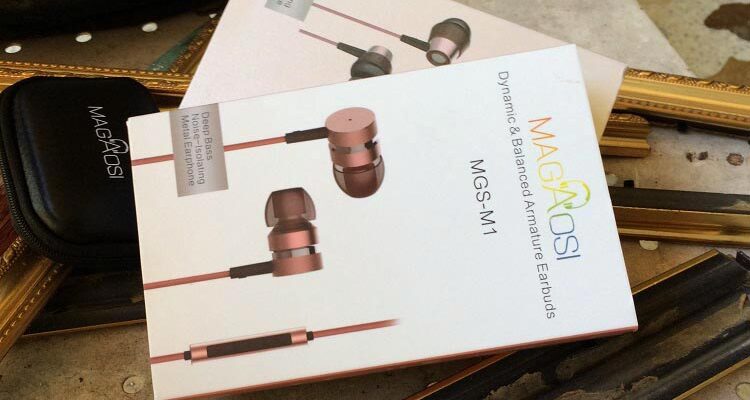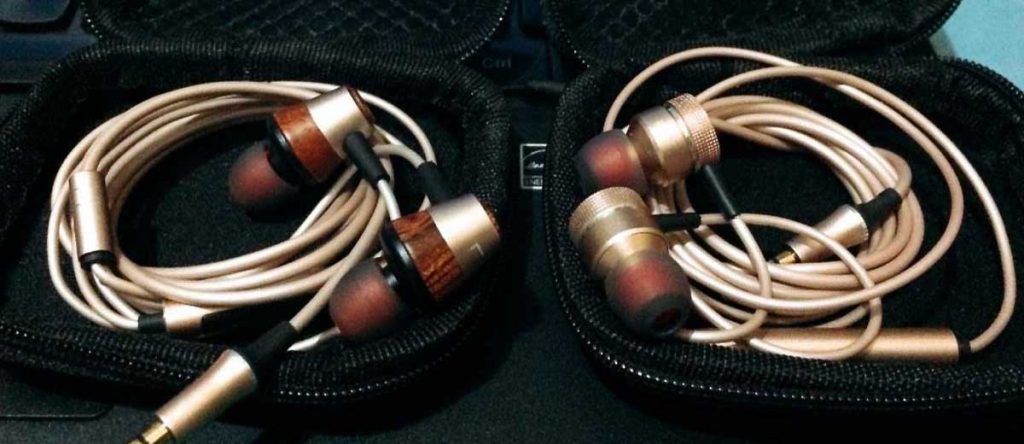Let me start this review by saying that I was never a fan of in ear monitors (IEMs) due to my past experience of them just either falling out of my ear or just plainly due to having a typical unnatural tone.
I’ve read a bunch of reviews of good natural sounding custom in ear monitors however but have never purchased one since I could never imagine liking anything being stuck in my ears for an extended period of time. Besides the comfort issue, I am also not very trusting when it comes to user reviews since I have bought so many headphones in the past and was left disappointed more than 80% of the time.
To add to that, it’s not really easy to resell customs in case I don’t like them. I have however found the deeper insertion type IEMs more stable and comfy for me like the old Shure e4s but like I said above, they didn’t sound good to me at all especially for a few hundred dollars.
Fast forward about fifteen years since my first IEM experiences, there are now a lot of products to choose from at much lower prices than they used to be. Sure, I’ve tried a few in the past five years but nothing ever stood out as anything worth listening to.
I guess the point of this review is to find out for myself whether these two IEMs from MaGaosi are just the same old junk or actually worth listening to music on. Since this is a review not just for me but for everyone reading this, I will, of course, give the readers a good idea of how they sound and what type of listener they will cater to.
What Is The Pitch?
M1
The MaGaosi M1 is the lower priced model between the two and MaGaosi says that these are tuned to be a good integration of balanced armature and dynamic drivers. The product info calls them a powerful sounding IEM with good driving bass; a warm, relaxed sound with sweet warm mids, fast transient response, good resolution, and to have rich details of mid-high frequencies.
All these are supposed to make the music more penetrating, with good performance and high-frequency extension with a nice sense of air to make it sound more emotional and layered. The finish is supposedly using a dust-free oxidation process making them less prone to peeling.
BK50
The BK50 is touted to “Let the heart return to nature” whatever that means. It’s supposed to have a pure natural sound and is supposed to have the perfect combination of a wood cavity and a metal shell to make the acoustic properties and materials play to the extreme. They write more about the advantages of the hybrid dynamic and balanced armature combination and the quality of the construction as well. Here are some more notes from the product info that I couldn’t really translate well…
Light material, fast vibration frequency, more clearly in the performance of the sound, better ductility, better compliance, low frequency dive deep, the effect is more powerful
Honeycomb anodized sandblasting shell, enhanced wood cavity outer cavity of the mechanical strength, but also makes the parts are not easy to fall off, leaving BK50 body more layered
Brazil real walnut wood resonant cavity, inhibit residual harmonic vibration noise in low frequency of dynamic driver, so that the frequency of the human voice is more loose, clean, sweet, while improving the cool and hard situation of the high-frequency part of dynamic driver, so that the whole headphones full range of sound long listening is not tired
Using polymer damping moderate material front cavity can improve the coaxial driver combination, due to multiple driver resonance phase interference, reduce harmonic vibration and phase distortion.
Build
So with all that said, what do I think about the build quality of these two IEMs? Well, they are actually quite nice. The finish is great and pictures may not actually do them justice. I don’t know how long the paint will last but for now, I will take their word for it that these are finished to a high standard especially at this price point.
Fit and Seal
The fit and seal of both the M1 and the Bk50 are exactly the same since they both come with the same exact set of tips. My choice for tips are the smallest ones since all the others make my ears itch. The smallest ones seal enough that the difference in sound between the small and medium sized tips are very similar as well.
Cable & Packaging
Both these headphones come in a package with three pairs of tips small medium and large. It also comes with a user manual and a small hard case. The cable is nonremoveable and has an in-line remote control. The headphone plugs are both 3.5mm TRRS types.
Sound Impressions
Tonality & Presentation
How do these sound? As usual, like I expected, none of the two sound fully neutral or natural and they are a failure for me when based on my personal taste looking for a natural tone. The BK50 however, does hit the spot for iPhone listening and is good enough for me when I am in bed and need something that I can sleep with.
Both the BK50 and the M1 are V-shaped IEMs but the 50 is quite a bit more satisfying to listen to due to not having the weird midrange that the M1 has. For the general public that like more of a bass and treble tilt, there is a lot to like about both of them. First of all, they are both capable of loud sound without distorting. Next, they are pretty darn inexpensive.
BK50 Preference
Among the two models compared here, I would say that paying the extra money for the MGS-BK50 is absolutely worth it. The cheaper closed back design MGS- M1 has tighter bass than the BK50 probably due to its closed back design which I actually like but the upper midrange to the lower treble is so offensive to me on them that I would rather not listen to music at all if given these as my only earphones.
Boosted Highs
The upper mids and lower highs of the M1 model are so boosted that it feels like there is nothing else left in the air region on top of it. The air above the lower treble region boost is masked all over by that lower treble boost. Please take in mind though that I am a person reviewing this from a standpoint of looking for a neutral and natural sound plus as I have mentioned above, nothing much so far has really impressed me when it comes to IEMs.
Fun Factor
The BK50 is definitely my overall favorite here even when compared to higher end K3HD which I will talk about more in the next review. In fact, even compared with my full sized headphones, I still feel that the BK50 is a very competitive product for the money due to their fun factor.
By the way, to add to my impressions, I would like to say that both these IEMs were tested using my iPhone 5s directly out of the headphone jack as well as my LHlabs geek out 1000. I didn’t go into detail about the differences between the two sources since I didn’t really notice any big differences in tonality between them with both these IEMs.
Matchability
Efficiency
These in ear monitors are very easy to drive but the slightly more sensitive BK50 picks up some hum when my iPhone is plugged in charging. I didn’t notice any humming coming from the M1.
I also tried them out with my LHlabs Geek out 1000 and the BK50 did start to hum until I touched the DAC and move it around. I guess the sensitivity makes it prone to any electronic noise that the system may have over the slightly less sensitive M1s.
Our Verdict
To buy or not to buy, that is the question. I say if you really need an in ear headphone and have nothing more to spend over how much the BK50 costs then go ahead and buy them. If you want bass and treble and no audible clipping or distortion when turning your music up, both of these IEMs pass with flying colors. The 50 excels in musicality for a few bucks more but if tighter bass regardless of the forward sound is all you care about then get the cheaper M1.
Technical Impressions
Model: BK50
- Use of music type: vocal female popular type
- Headphone plug type: straight Type
- Impedance: 32Ω
- Wearing: in-ear
- Headphone output source: HIFI
- Sensitivity: 101dB / mW
- Frequency response range: 20-20kHz
- Plug: 3.5mm gold-plated
- Cable length: 120cm
Model: M1
- Speaker drive mode: 1 balanced armature + 1 Dynamic
- Impedance: 32Ω±15%
- Frequency Response: 20Hz-20 kHz
- Sensitivity: 101±1db
- L&R Channel Balance Sensitivity: ≤2db
- Max Input Power: 10mW
- Length: 120cm±5cm
- Wire material: TPE
- Plug material: 3.5mm gold-plated
- Microphone compatibility range: Full Compatible
- Distortion: ≤1%








